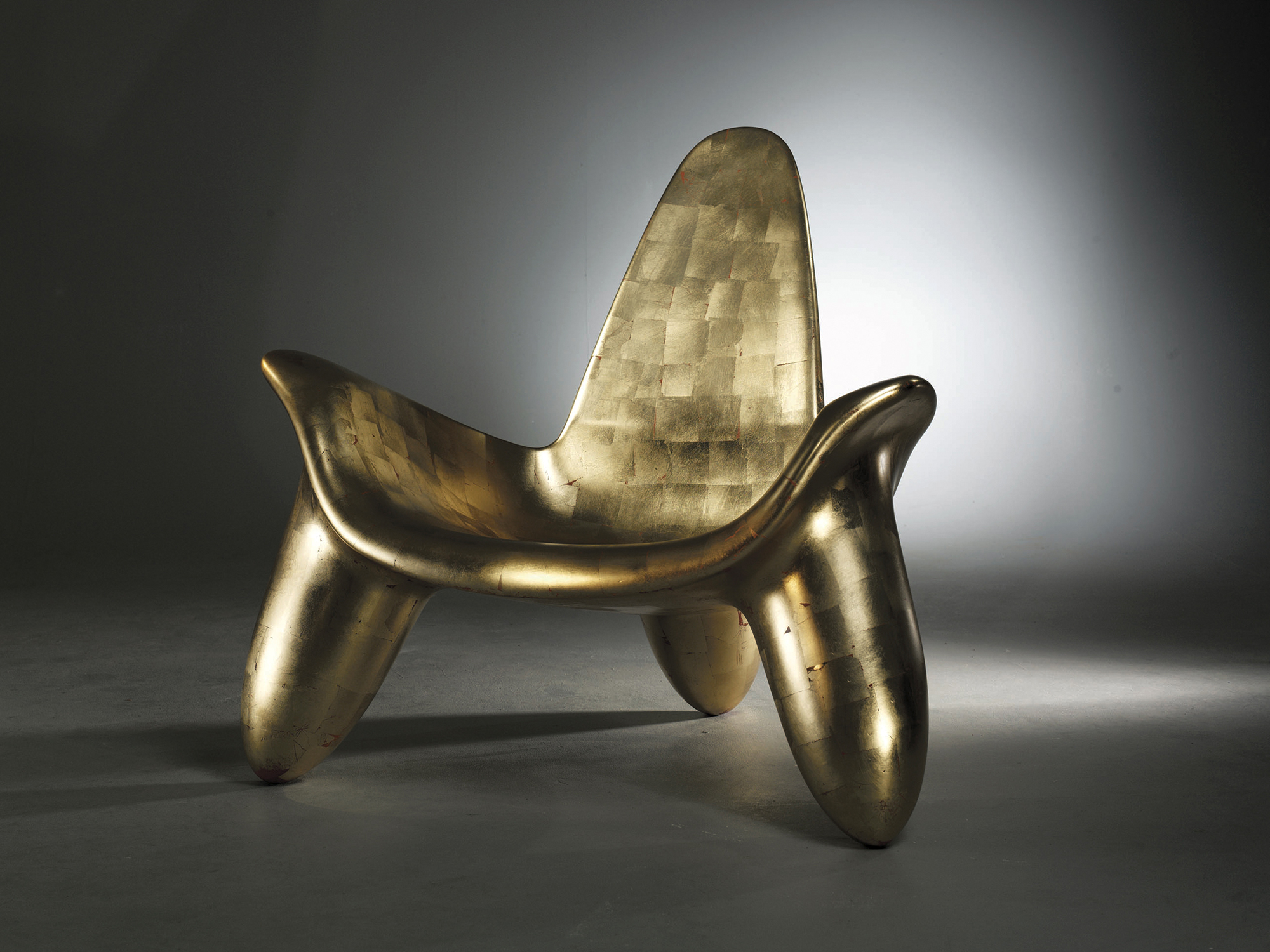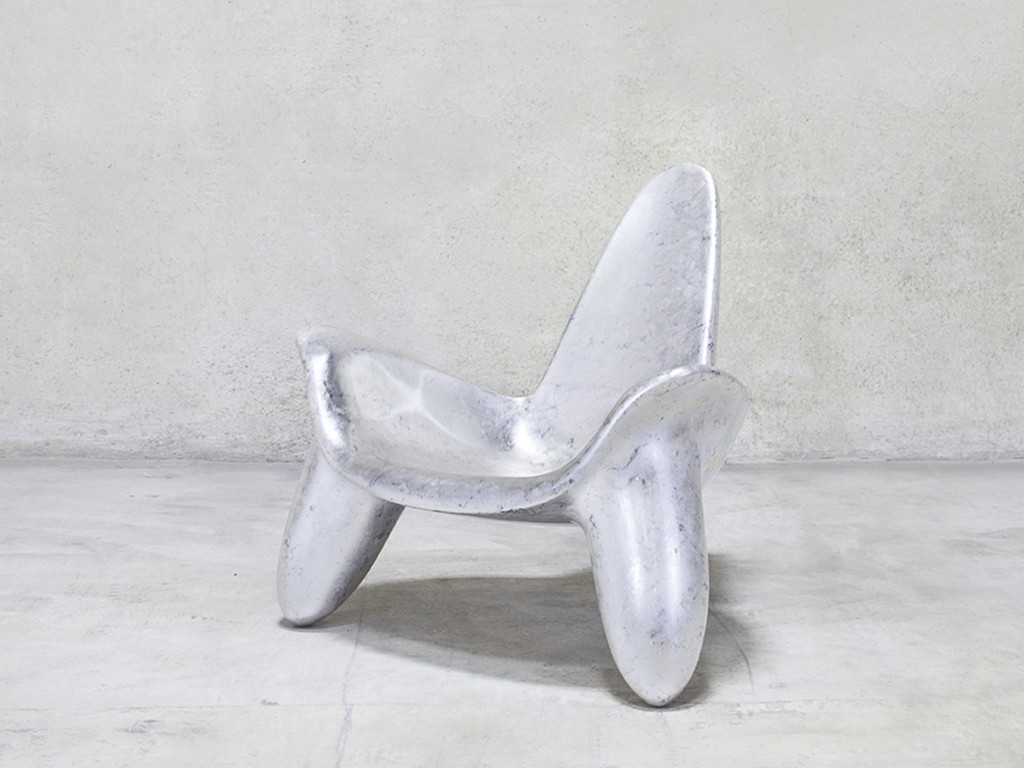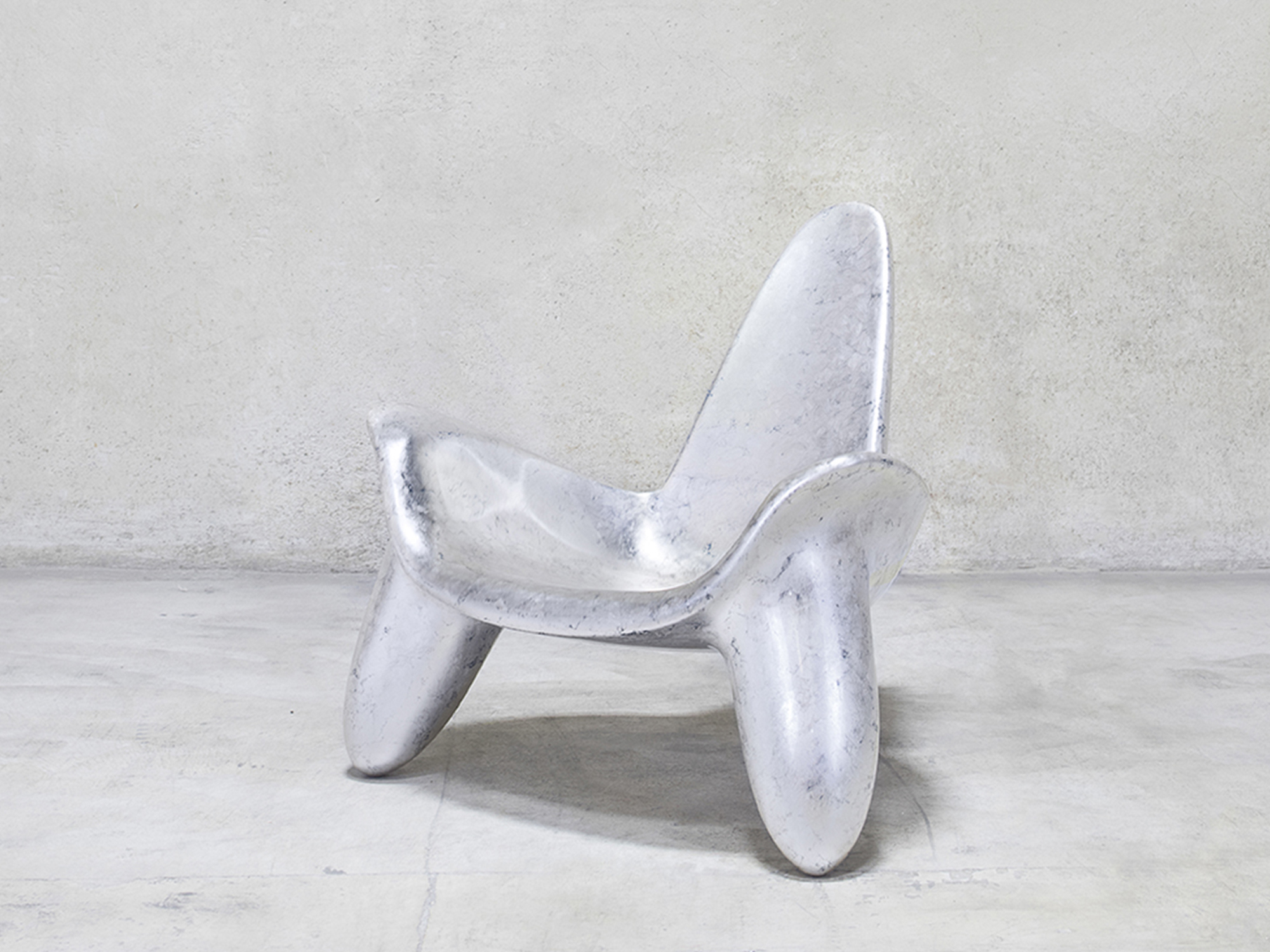A long record of critical acclaim, scholarship, and steady acquisition by public institutions gives American artist Wendell Castle’s work indelible historic importance. His groundbreaking unification of sculpture and furniture galvanized a generation of artists and designers and contributed to the acceptance of design as an art form in its own right.
Castle’s work is recognized for its wry wit and uniquely sculptural use of materials, including his signatures: stack-laminated wood and fiberglass. His new body of work pushes these materials further, while also applying his distinctive exploration of volume to bronze, steel, and aluminum.
Night on Earth, a biomorphic stainless steel chaise, is layered and textural; its curvy shell pierced and permeable. Created by welding together “amoeba-like” metal forms, the final piece is warm and vital, burnished to achieve a smooth surface with a high polish. Considering the metal forms as cells rather than amoebae, this sculpture becomes a kind of living organism. Light is integral to several of Castle’s new works; in Night on Earth, for example, light shines through the interstices between the metal shapes, creating a starlike pattern on the floor.
With this exhibition, Castle is presenting new works in fiberglass. Unlike his earlier designs (including his celebrated Molar Group), which employed relatively simple techniques and straightforward zoomorphic and anthropomorphic forms, his new fiberglass works fully embrace the material, resulting in sensuous, fully actualized volumes with luminous finishes.
His Nirvana Chair is comprised of design elements that evince both celerity and repose. A broad rounded seat rests atop three stylized legs—a device common to several of Castle’s new fiberglass designs—that can be read as references to organic forms or to bullets. A leg pierces one armrest, forming a knob, while the other armrest is attenuated into a horizontal fin that serves as a tabletop. The piece is finished with multiple coatings of automobile-grade “metal-flake” urethane. The paint—a favorite, Castle points out, among hot-rod restorers—is iridescent, and appears to change colors—from blue to purple to aubergine—depending on the angle at which light strikes the surface.
The organic, curvilinear forms of this new work link it to Castle’s past masterworks, but the bold experimentation with materials, surfaces, and finishing techniques push his oeuvre very close to its magnum opus. These pieces represent a mature synthesis of all that Castle has learned throughout his career, combined with his indefatigable curiosity and excitement in exploration and discovery.












